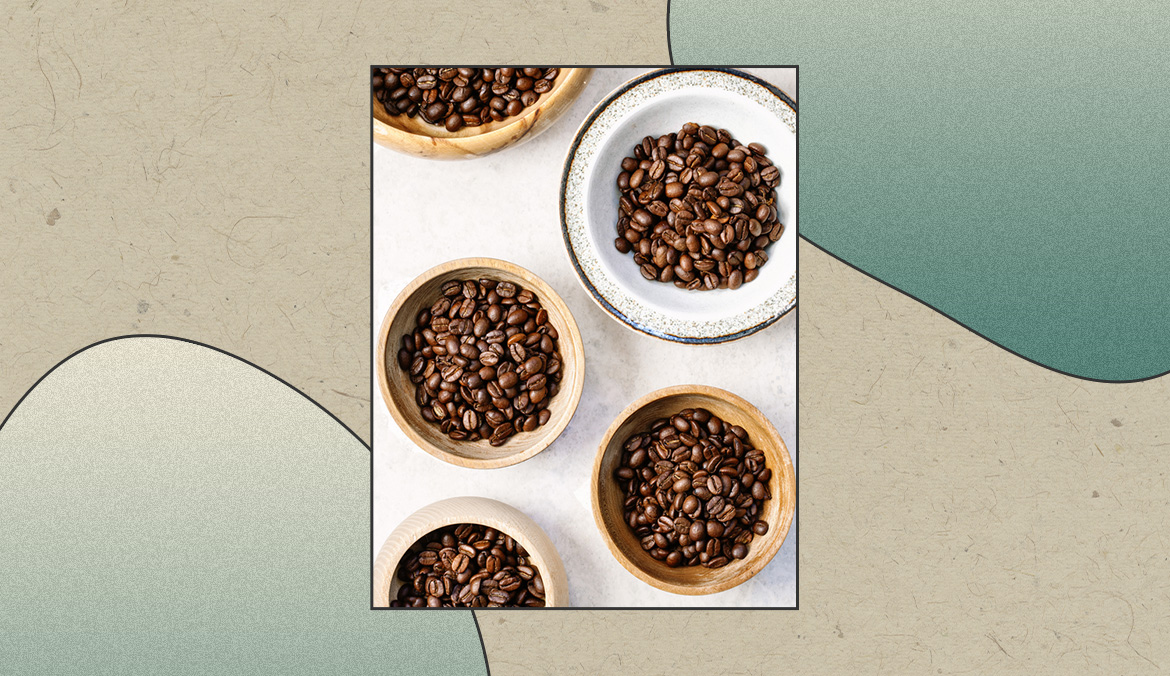For many, a morning cup of coffee is an essential ritual. The practice of brewing your favorite blend (or standing in line at your local coffee shop) followed by the first sip heralds the beginning of a new day, infuses us with energy, and warms or cools depending on our wants and the weather. Plus, it’s delicious. But how sustainable is the coffee industry—and how can you make your cup of joe more planet-friendly?
How sustainable is the coffee industry, really?
As with most universally-loved consumer habits, coffee production isn’t the most environmentally friendly of practices. From Africa to the Middle-East, Southeast Asia to Central and South America, coffee trees (or shrubs, more like, typically of the species Arabica or Robusta) bear small, cherry-like fruit that are plucked, pulped, dried, processed, and exported. In fact, more than 90 percent of coffee is exported from the plant’s primary growers—Colombia, Brazil, Indonesia, Vietnam, and Ethiopia, that process requiring energy and emissions—packaged, and sold.
“At present, the coffee industry isn’t very sustainable,” says Craig Lamberty, owner of Conscious Coffees. “There are a lot of large corporate farms that clear-cut fields (including rainforests) to plant their crops, coffee is harvested with machines that cut the tops of the bushes to save on labor costs, and pesticides are used to fight disease.”
Approximately 30 gallons of water are required for a single cup of coffee—and the world consumes 2.25 billion cups a day (sipping is at its apex in Africa and Europe, while 66 percent of adults in the U.S. claim a daily cup). And while the footprint of our cups is significant, the cycle created by climate change is something like karmic: as the world warms, much of the more than 27 million acres used to grow coffee will no longer offer a suitable climate for the plant’s cultivation.
How to know if you’re buying a sustainable cup of coffee
When purchasing coffee, it can be difficult to determine the true nature and sustainability of your beans—from both an environmental and an ethical perspective. “The coffee industry is unfortunately full of marketing jargon and half-baked claims,” says food scientist Makenzie Jackson, MS. “I typically avoid buying my coffee in a grocery store because of the corporations that control the market and give an impression of being a small local roaster.”
Jackson adds that in the world of high-quality coffee, a higher price point doesn’t always reflect the reality of the working conditions for the growers. “There are a lot of different logos and claims that are just marketing,” she says. And considering that more than 125 million people around the world depend on coffee for their livelihoods, working conditions are a primary concern in terms of sustainability.
“Coffee is an amazing way to use your dollars to support sustainability efforts in the beautiful nature it grows in and directly empower farmers around the world,” says Jackson. “I think that as customers demand high quality sustainable coffee, there will be an ever increasing number of roasters who will meet that need.”
So how do you determine which coffee beans are best for us and the environment? Here, four things to look for when making a purchase—straight from the experts.
1. Organic certification
“The main certification I would look for is organic because this means that no pesticides were used,” says Lamberty. While the word “organic” may be bandied about, the certification to look for is USDA Organic, which means that a farm is following all growing protocols.
2. Fair Trade certification
As mentioned above, sustainability extends to human welfare. Make sure that your beans are Fair Trade Certified, a seal that signifies safe working conditions, livable wages, transparency, and environmental standards. Again, the actual certification is key. “If the coffee doesn’t say ‘Fair Trade Certified’ but instead just states it’s “fair trade,” there’s not necessarily a standard behind that,” says Jackson.
3. Shade-grown beans
A more sustainable approach to cultivating coffee involves shade-grown beans or those grown amid trees rather than in clear-cut land. This practice is known as agroforestry, or creating a more ecologically sound climate by mixing woody plants with agriculture. “Not only does this help the quality of the coffee bean but it means the fields weren’t clear cut and the added trees are great for the environment,” says Lamberty. (The shade minimizes the need for pesticides, too.) Sans certification, though, a claim of shade-grown beans doesn’t carry much weight—which leads to our next two points.
4. Traceability
“I like to know the journey my beans take from the plant to my cup,” says Jackson. This means an openness around farming location and practices, worker conditions, methods of exporting, and methods of processing. “There should be a way to trace the beans you’re buying back to the co-op or even the farm that it was grown on,” says Lamberty.
5. Transparency
Transparency is likely the most essential step when sourcing sustainable coffee for your cup, as it encompasses all of the previously mentioned factors. “The clearest sign that a brand isn’t sustainable is lack of transparency,” says Lamberty. “What region do the beans come from? How are they grown? Are they organic? The less information given, the more you should be wary of the product.” Basically, make sure that your bean brand is being upfront about, well, everything.
